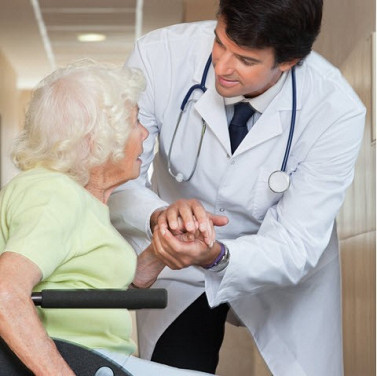Urinary incontinence occurs when a person cannot control their ability to urinate, leading to involuntary urine loss. It's important to note that urinary incontinence is often associated with aging, but it is not an obligatory consequence. The risk of urinary incontinence increases with age, with approximately 20% of people aged 80 and older experiencing incontinence, compared to 9% in the general population.
Understanding the causes of urinary incontinence:
Urinary incontinence can result from various factors, including temporary issues like constipation or urinary tract infections, and permanent conditions such as medication side effects or age-related changes. Consulting a healthcare professional is essential to address these concerns and prevent potential complications.
Risk factors for urinary leakage include obesity, excessive caffeine consumption, smoking, and certain medical conditions like Alzheimer's and Parkinson's disease. Gender-specific causes, such as prostate issues in men and childbirth-related factors in women, also contribute to urinary incontinence.
Exploring treatment options:
Find YOUR ideal care home NOW!
Treatment for urinary incontinence depends on its type and underlying cause. Pelvic floor muscle exercises, known as Kegels, and behavioral therapies like bladder training are common first-line treatments. Medications, including antispasmodics and estrogens, may also be prescribed to manage urinary leakage effectively.
It's crucial to emphasize the importance of seeking professional medical advice before attempting self-medication, as improper treatment can lead to adverse health effects.
Prevention tips for effective management:
Managing urinary incontinence in daily life requires proactive measures and lifestyle adjustments. Consider the following prevention tips to enhance bladder control and minimize urinary leakage:
- Avoid bladder irritants like tea and alcohol.
- Maintain a healthy weight to reduce abdominal pressure.
- Limit fluid intake before bedtime to prevent nighttime accidents.
- Plan restroom access ahead of time when venturing out.
- Invest in specialized underwear designed for discreet protection.
- Moderate alcohol consumption and carry spare underwear for emergencies.
- Monitor your diet to avoid foods that may exacerbate bladder irritation.
Risk factors for urinary incontinence
| Risk Factor | Explanation |
|---|---|
| Age | Bladder muscles weaken with age, increasing the risk of incontinence. |
| Pregnancy and Childbirth | Pressure on the bladder and weakened pelvic floor muscles during delivery. |
| Obesity | Excess weight puts added pressure on the bladder and pelvic muscles. |
By understanding the causes, treatment options, and prevention strategies for urinary incontinence, individuals can take proactive steps to manage their condition effectively. At Senior Home Plus, we're committed to supporting seniors in finding care homes or facilities best suited to their needs.
Contact us at 0230 608 0055 or fill out the form for personalized assistance in this important decision-making process.
FAQ:
What is urinary incontinence?
Urinary incontinence refers to the unintentional leakage of urine. It can range from minor leaks to more severe cases where controlling the bladder is difficult.
What are the common types of urinary incontinence?
The most common types include:
- Stress incontinence: Leakage during activities like coughing or lifting.
- Urge incontinence: Sudden, strong urge to urinate.
- Overflow incontinence: Frequent dribbling due to incomplete bladder emptying.
Who is at risk of developing urinary incontinence?
Risk factors include aging, pregnancy, childbirth, obesity, and certain medical conditions like diabetes or neurological disorders.
Can urinary incontinence be treated?
Yes, treatments range from lifestyle changes and pelvic floor exercises to medications and surgical interventions, depending on the severity and type.
How does aging impact urinary incontinence?
As people age, bladder muscles weaken, and conditions like an overactive bladder become more common, increasing the risk of incontinence.
What lifestyle changes can help manage urinary incontinence?
Staying hydrated, maintaining a healthy weight, avoiding bladder irritants (like caffeine and alcohol), and practicing pelvic floor exercises can help.
Can men experience urinary incontinence?
Yes, men can also experience urinary incontinence, often due to prostate issues, surgery, or an overactive bladder.
When should I see a doctor about urinary incontinence?
If incontinence impacts your daily life, causes emotional distress, or is accompanied by symptoms like pain or blood in urine, consult a healthcare professional.
Can dietary changes improve urinary incontinence?
Avoiding bladder irritants like caffeine, alcohol, and spicy foods, and maintaining proper hydration can help manage symptoms.
Is urinary incontinence a normal part of aging?
While more common with age, it isn’t a normal or inevitable part of aging. Treatment options are available to improve quality of life.

